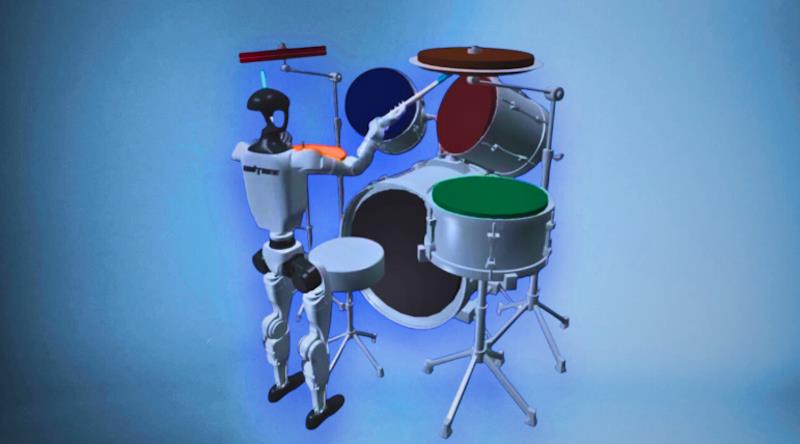
Humanoid Robot Learns To Play The Drums Using AI And Simulated Practice
August 13, 2025 by Mai Tao
An innovative project is transforming the relationship between AI, robotics, and creativity. At its core is a system that teaches a humanoid robot to play the drums – not through direct programming, but through a simulated learning process inspired by how musicians practice and improve. (Video on LinkedIn .)
Picture a live concert where, alongside human musicians, a humanoid robot takes its place behind the drum kit. Science fiction? Maybe for now - but it could soon become reality.
At the forefront of this breakthrough is Asad Ali Shahid, researcher at SUPSI (IDSIA USI-SUPSI ) and lead researcher on the project Robot Drummer: Learning Rhythmic Skills for Humanoid Drumming , developed in collaboration with Politecnico di Milano.
Shahid says:“We started with a simple but powerful question: what if a robot could learn to play a musical instrument like the drums, not by following a programmed sequence, but by practicing and improving like a real musician?
“The result is a humanoid drummer that not only plays correctly but does so using movement strategies that are surprisingly human-like.”
The training takes place entirely in a simulated environment, where the robot is exposed to real rhythmic patterns extracted from MIDI files (Musical Instrument Digital Interface), a digital language that allows electronic instruments and computers to communicate musically.
Through a process of trial and error, the robot learns to strike the correct drum at precisely the right time. A reinforcement learning mechanism guides its progress, rewarding accurate timing and penalizing mistakes - much like a music teacher shaping a student's performance over time.
As the robot gains experience, it begins to refine its own playing strategies: alternating hands, crossing arms to reach different drums, and optimizing how it moves across the kit.
These complex, human-like behaviors emerge spontaneously from the learning process – they are not pre-coded or manually designed.
For now, the robot performs only in a high-fidelity simulation, but the research team is already working on bringing it into the physical world. The goal is to transfer the AI model to a real humanoid robot capable of interacting with acoustic instruments and performing live.
“Our long-term ambition is to build robots that can listen to music in real time and adapt their performance accordingly,” adds Shahid.
Playing the drums demands timing, coordination, and intuition – for a robot, that means learning to move naturally, perceive rhythm, and respond to dynamic environments. But the implications of this work reach far beyond the music stage.
This project opens the door to a new generation of robots with advanced motor control, perceptual adaptation, and even creative potential – abilities that are a far cry from the rigid, repetitive tasks of traditional industrial machines.
Legal Disclaimer:
MENAFN provides the
information “as is” without warranty of any kind. We do not accept
any responsibility or liability for the accuracy, content, images,
videos, licenses, completeness, legality, or reliability of the information
contained in this article. If you have any complaints or copyright
issues related to this article, kindly contact the provider above.
Most popular stories
Market Research

- Versus Trade Launches Master IB Program: Multi-Tier Commission Structure
- Mutuum Finance (MUTM) New Crypto Coin Eyes Next Price Increase As Phase 6 Reaches 50% Sold
- Flexm Recognized As“Highly Commended” In The Regtech Category At The Asia Fintech Awards Singapore 2025
- Tappalpha's Flagship ETF, TSPY, Surpasses $100 Million In AUM
- Stocktwits Launches Stocktoberfest With Graniteshares As Title Partner
- Pendle Grows An Additional $318 Million TVL Just 4 Days After Plasma Launch




















Comments
No comment